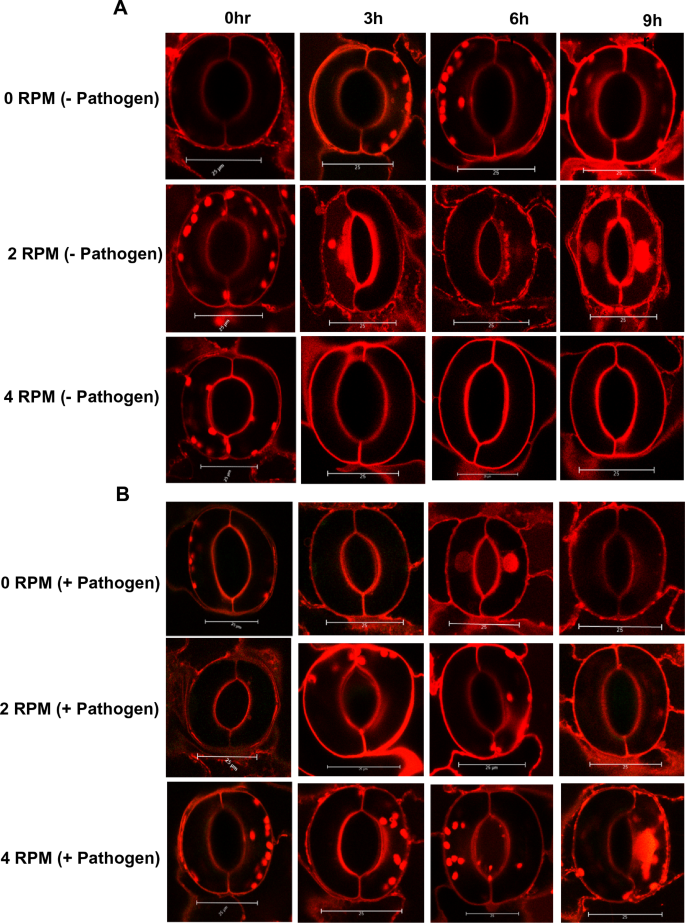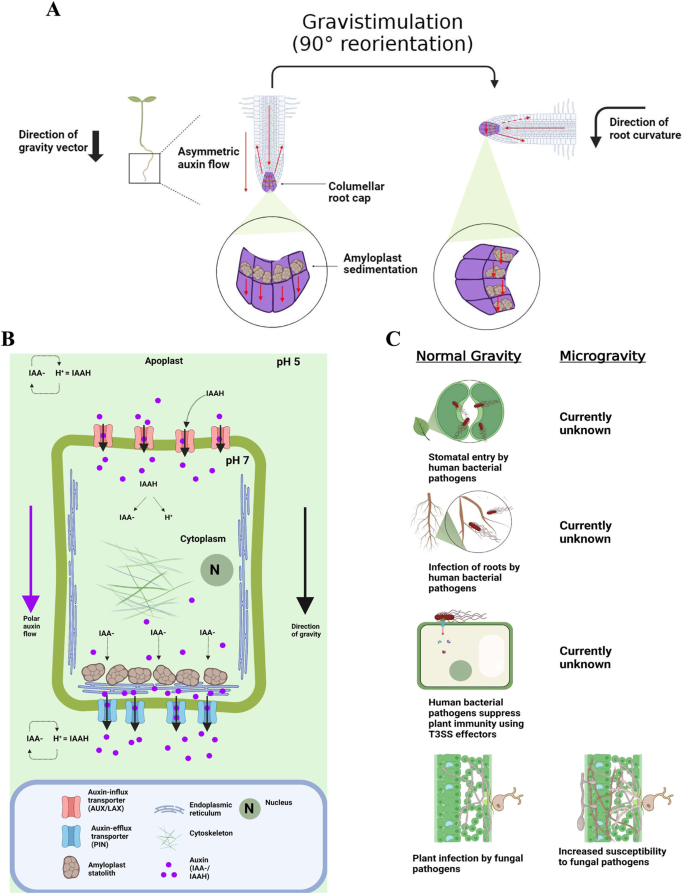2024-01-17 デラウェア大学 (UD)
◆宇宙空間では植物が重力を感知し、根を使って成長するが、模擬微小重力下では、これが逆効果となり、サルモネラの侵入を助長することが示されました。また、植物の成長を促進し、ストマタ(葉や茎の微小な孔)を閉じることで感染を防ぐヘルパーバクテリア(B. subtilis UD1022)もISSの環境下で効果が低くなりました。将来の宇宙での食品安全性に関するリスクを考え、種子の滅菌や植物の遺伝子修正などの解決策が模索されています。
<関連情報>
- https://www.udel.edu/udaily/2024/january/harsh-bais-kali-kniel-noah-totsline-spacegrown-plants-foodborne-infections/
- https://link.springer.com/article/10.1038/s41598-024-51573-y
- https://www.nature.com/articles/s41526-023-00323-x
微小重力を模擬するとレタスのサルモネラ菌による気孔侵入が促進され、生物防除が抑制される Simulated microgravity facilitates stomatal ingression by Salmonella in lettuce and suppresses a biocontrol agent
Noah Totsline,Kalmia E. Kniel,Chandran Sabagyanam & Harsh P. Bais
Scientific Reports Published:09 January 2024
DOI:https://doi.org/10.1038/s41598-024-51573-y

Abstract
As human spaceflight increases in duration, cultivation of crops in spaceflight is crucial to protecting human health under microgravity and elevated oxidative stress. Foodborne pathogens (e.g., Salmonella enterica) carried by leafy green vegetables are a significant cause of human disease. Our previous work showed that Salmonella enterica serovar Typhimurium suppresses defensive closure of foliar stomata in lettuce (Lactuca sativa L.) to ingress interior tissues of leaves. While there are no reported occurrences of foodborne disease in spaceflight to date, known foodborne pathogens persist aboard the International Space Station and space-grown lettuce has been colonized by a diverse microbiome including bacterial genera known to contain human pathogens. Interactions between leafy green vegetables and human bacterial pathogens under microgravity conditions present in spaceflight are unknown. Additionally, stomatal dynamics under microgravity conditions need further elucidation. Here, we employ a slow-rotating 2-D clinostat to simulate microgravity upon in-vitro lettuce plants following a foliar inoculation with S. enterica Typhimurium and use confocal microscopy to measure stomatal width in fixed leaf tissue. Our results reveal significant differences in average stomatal aperture width between an unrotated vertical control, plants rotated at 2 revolutions per minute (2 RPM), and 4 RPM, with and without the presence of S. typhimurium. Interestingly, we found stomatal aperture width in the presence of S. typhimurium to be increased under rotation as compared to unrotated inoculated plants. Using confocal Z-stacking, we observed greater average depth of stomatal ingression by S. typhimurium in lettuce under rotation at 4 RPM compared to unrotated and inoculated plants, along with greater in planta populations of S. typhimurium in lettuce rotated at 4 RPM using serial dilution plating of homogenized surface sterilized leaves. Given these findings, we tested the ability of the plant growth-promoting rhizobacteria (PGPR) Bacillus subtilis strain UD1022 to transiently restrict stomatal apertures of lettuce both alone and co-inoculated with S. typhimurium under rotated and unrotated conditions as a means of potentially reducing stomatal ingression by S. typhimurium under simulated microgravity. Surprisingly, rotation at 4 RPM strongly inhibited the ability of UD1022 alone to restrict stomatal apertures and attenuated its efficacy as a biocontrol following co-inoculation with S. typhimurium. Our results highlight potential spaceflight food safety issues unique to production of crops in microgravity conditions and suggest microgravity may dramatically reduce the ability of PGPRs to restrict stomatal apertures.
微小重力とヒト細菌病原体による植物自然免疫の回避 Microgravity and evasion of plant innate immunity by human bacterial pathogens
Noah Totsline,Kalmia E. Kniel & Harsh P. Bais
npj Microgravity Published:07 September 2023
DOI:https://doi.org/10.1038/s41526-023-00323-x

Abstract
Spaceflight microgravity and modeled-microgravity analogs (MMA) broadly alter gene expression and physiology in both pathogens and plants. Research elucidating plant and bacterial responses to normal gravity or microgravity has shown the involvement of both physiological and molecular mechanisms. Under true and simulated microgravity, plants display differential expression of pathogen-defense genes while human bacterial pathogens exhibit increased virulence, antibiotic resistance, stress tolerance, and reduced LD50 in animal hosts. Human bacterial pathogens including Salmonella enterica and E. coli act as cross-kingdom foodborne pathogens by evading and suppressing the innate immunity of plants for colonization of intracellular spaces. It is unknown if evasion and colonization of plants by human pathogens occurs under microgravity and if there is increased infection capability as demonstrated using animal hosts. Understanding the relationship between microgravity, plant immunity, and human pathogens could prevent potentially deadly outbreaks of foodborne disease during spaceflight. This review will summarize (1) alterations to the virulency of human pathogens under microgravity and MMA, (2) alterations to plant physiology and gene expression under microgravity and MMA, (3) suppression and evasion of plant immunity by human pathogens under normal gravity, (4) studies of plant-microbe interactions under microgravity and MMA. A conclusion suggests future study of interactions between plants and human pathogens under microgravity is beneficial to human safety, and an investment in humanity’s long and short-term space travel goals.


